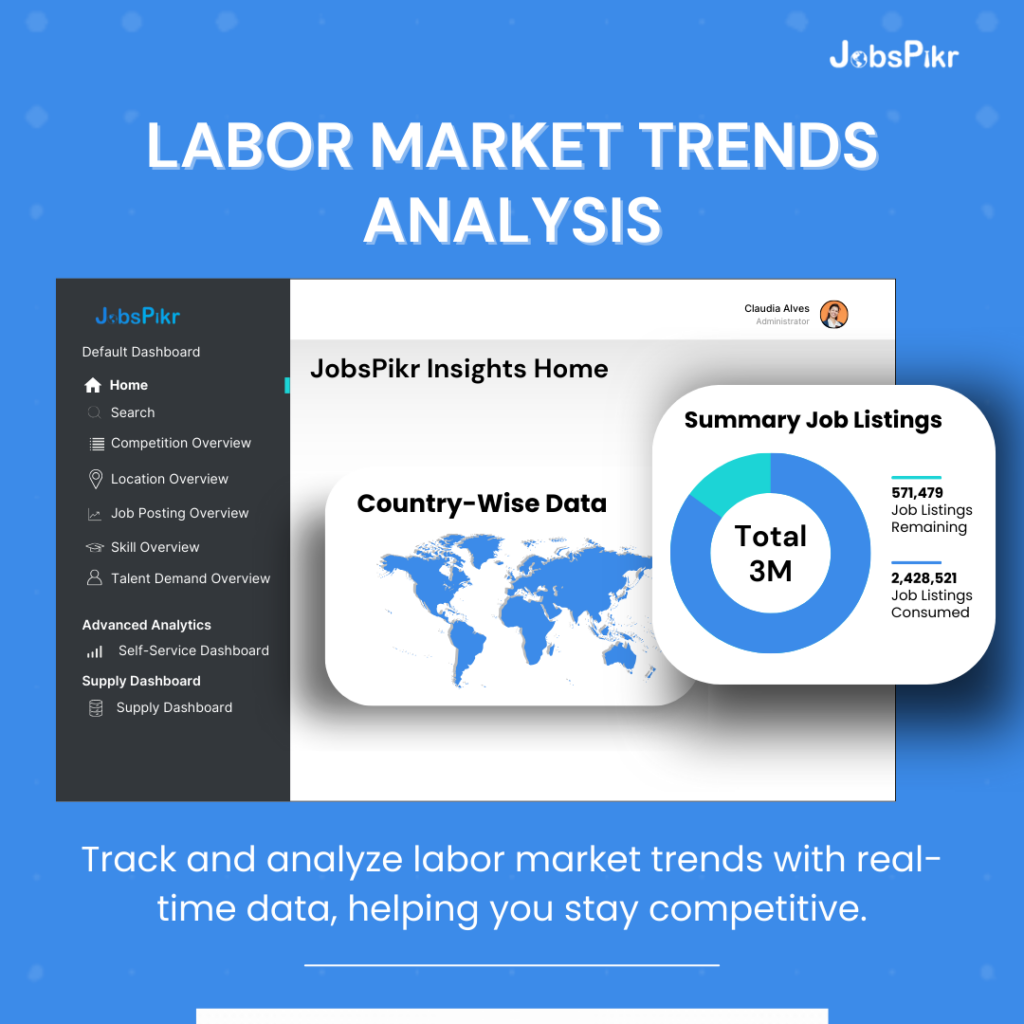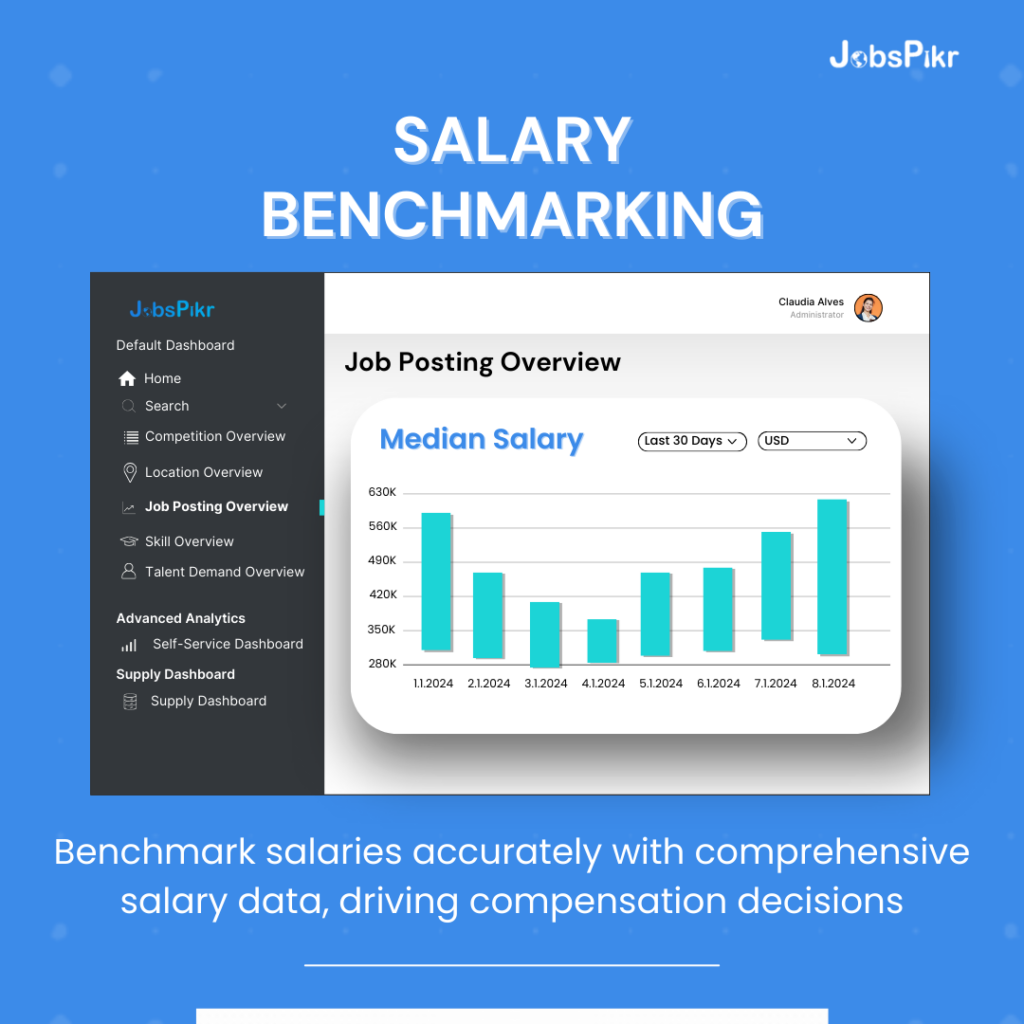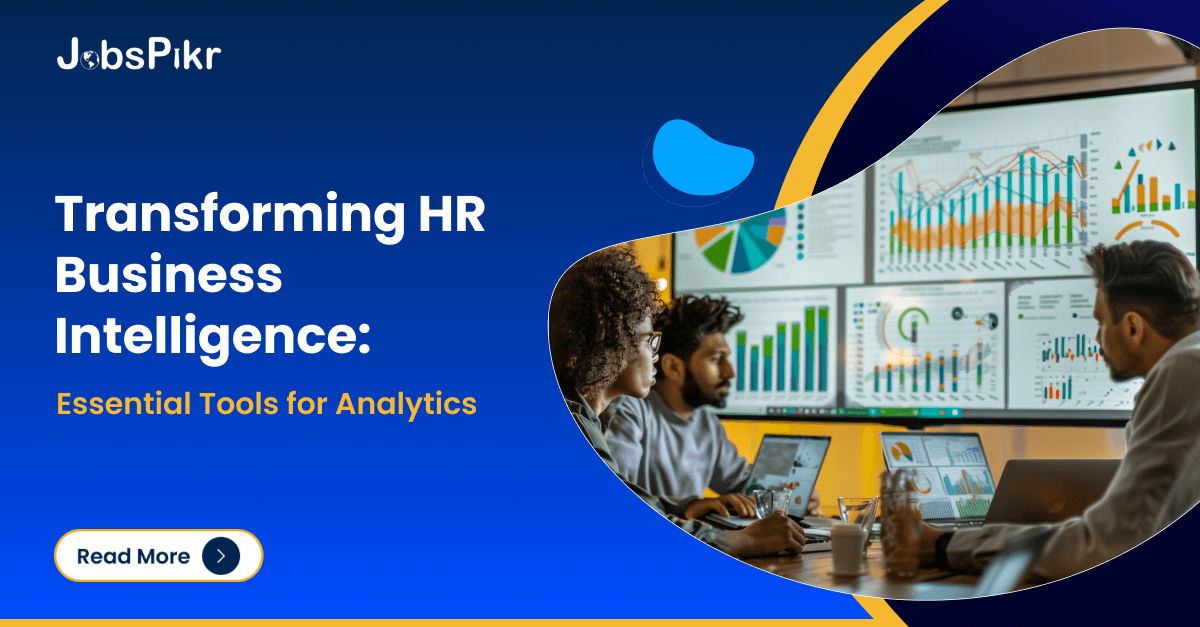The world we live in today has become largely data driven, and this is now impacting the domain of human resource management. Data-centric methods enabled by HR business intelligence are phasing out traditional ways of managing workforce-related processes. Now more than ever, in a world of pervasive and intricate workforce complexity that organizations need to navigate each day, the importance of HR business intelligence is even higher where using advanced analytics can offer an invaluable look into workforce data. In this post, we cover the key HR analytics tools and what they can (e.g. enabling data-driven decision making) bring to revolutionizing human resource management as a tool for rethinking organizational design of people.
How HR Business Intelligence Has Evolved Over Time?
HR business intelligence is used to analyze data and improve human resource management. In the past, HR used simple metrics such as turnover percentages and captives to govern their employees. But fast-forward to the advanced analytics and big data era, and HR has matured in its strategic capabilities contributing positively (not negatively) towards business outcomes. HR business intelligence today includes solutions for capturing and measuring workforce data using a variety of tools.
This large volume of data needs analysis and Interpretation, which enables HRs to make Data driven decisions that will improve their recruitment process. employee engagement,. performance management…overall HR strategy…. HR business intelligence transforms raw data into actionable insights, helping organizations to bridge human capital strategy and goals in sync with the different business objectives thus providing them an edge over others within the market.
Why HR Analytics Tools Are Crucial for Modern HR Management?
No wonder, for making the tidewater with HR business intelligence the use of tools that increase new dimensions of scope to check a big-picture view on workforce management is important. These tools are critical for HR professionals in easily collecting and processing rich data. With the knowledge they extract using these tools, organizations can discover trends within both their own workforce and industry as a whole that will not only allow them to predict future needs from staff but contribute directly to initiatives aiming at uplifting employee productivity whilst maintaining morale.
1. Dashboards: Visualizing HR Data

Dashboards are one of the most basic tools for HR analytics They are a graphical representation of HR metrics, thus allowing HR professionals to easily track and evaluate the overall health of their workforce. Data on employee demographics, turnover rates, absenteeism and performance metrics can all be shown in dashboards.
Well designed dashboards help HR teams in recognizing the potential problems so that corrective actions can be taken proactively. If, for instance, the dashboard reveals a recent spike in employee turnover within one division of a company, HR may look at what is driving this and deploy particular action plans around retention. Dashboards also provide real-time monitoring, which allows HR to be quicker in responding with issues that arise.
2. Predictive Analytics Software: Anticipating Workforce Trends
In the world of HR business intelligence, predictive analytics has set a new class apart. Predictive analytics software can predict future workforce trends by analyzing historical data which help organizations to take a proactive decision. For example, predictive analytics can enable HR to forecast when notably high turnover might be reached so they can put change management and retention strategies ahead of the possible crisis.
It can also be used as a measure to predict employee leasing, identifying the employees that are at a high potential scale and on top risk. Addressing this early enough allows HR to act proactively in keeping top talent and mitigating some of the high costs associated with turnover. This type of foresight is priceless in the current competitive job market where organizations need educated employees who they are able to retain.
3. Data Visualization Platforms: Simplifying Complex Data

Since HR analytics entails complex data that needs interpreting, the routines of these professionals benefit from data visualization platforms. These sites provide information in graphical form making data easily digestible. Data visualization platforms help to make data understandable and thereby assist HR professionals in articulating insights before their stakeholders.
Take for example a data visualization platform — one that can turn an intricate dataset around employees’ output into beautiful interactive UI charts, giving you insight on what your churn trends and patterns look like. While this makes it easier for HR to find gaps, the insights can be shared with senior management leading to data-driven decision-making.
4. HR Analytics Tools for Recruitment

Recruitment is one of the most important functions those in HR do and with these tools, we can really see how trends or data could have such an effect on this process. For example, Job market data providers such as JobsPikr that leverages AI provides great insights to job market trends and your competitors’ hiring strategies. JobsPikr analyzes job postings and other market data to provide HR teams with insights on top skills in demand, salary benchmarking reports as well help them optimize their recruitment strategy.
For example, JobsPikr can provide HR professionals with up-to-the-minute insights on job trends that help in tweaking recruitment campaigns. Knowing what competitors want to hire, companies can improve their job descriptions and offers so as not to miss the best candidates. Besides, the data from JobsPikr can help you to uncover emerging job roles and skills so that HR stays abreast with a changing job market.
5. Employee Engagement Tools
Employee engagement is a great enabler of organizational success and in this context, the HR business intelligence tools can very conveniently be put to use for understanding as well measuring/ improving it. For instance, tools like employee surveys, feedback platforms and sentiment analysis software extract how employees feel about their work environment, leadership expectations as well job satisfaction etc for HR to delve upon.
This allows HR to examine the data streaming from these tools and find ways in which employee disinterest can be broken down wherever it finds a specific pain point. HR might, for instance, see from survey data that employees are unhappy with the career development available to them so HR can introduce an improved training and a development accession. Employees who are engaged accomplish more in their work, tend to stick around longer and help create a positive culture.
6. Performance Management Tools
The next way HR business intelligence tools can greatly help is in performance management. Some HR analytics tools for performance management are software for performance appraisal, 360-degree feedback systems and productivity tracking platforms. These sets of tools help HR tracking employee performance, identify goals and deliver feedback in measurable as well objective format.
These tools can then be used to make sure employees are on the right path and continuously evolving with respect not only for competency but also for behavior. For instance, performance appraisal software can be used to monitor an employee’s progress and provide valuable information about the areas where employees are performing good while identifying those which utilize planting. This information is leveraged for the preparation of individually tailored development plans which are aimed at leading employees to their highest level.
How to Effectively Implement HR Analytics Tools?
Implementing HR analytics tools requires careful planning and execution. Here are some practical tips to help organizations get started:
1. Define Clear Objectives
Before implementing any HR analytics tool, it is crucial to define clear objectives. What specific challenges or opportunities is the organization looking to address? Whether it’s improving recruitment efficiency, enhancing employee engagement, or optimizing performance management, having well-defined goals will guide the selection and implementation of the right tools.
2. Choose the Right Tools
Selecting the right tools for HR analytics is essential for success. Organizations should consider factors such as ease of use, scalability, integration capabilities, and cost when choosing analytics tools. It’s also important to choose tools that align with the organization’s overall HR strategy.
3. Invest in Training
To maximize the benefits of HR analytics tools, HR professionals need to be well-versed in using them. Investing in training programs that equip HR teams with the skills to collect, analyze, and interpret data is crucial. Training should also cover how to effectively communicate insights to stakeholders.
4. Ensure Data Quality
The effectiveness of HR business intelligence depends on the quality of the data being analyzed. Organizations should implement robust data management practices to ensure that the data being fed into analytics tools is accurate, complete, and up-to-date. Regular data audits can help in maintaining data quality.
5. Foster a Data-Driven Culture
For HR business intelligence to truly transform HR management, organizations need to foster a data-driven culture. This involves encouraging HR professionals to base decisions on data rather than intuition or anecdotal evidence. Leadership support is critical in driving this cultural shift.
6. Monitor and Evaluate Outcomes
Finally, it’s important to continuously monitor and evaluate the outcomes of HR analytics initiatives. Are the tools delivering the expected results? Are there areas for improvement? Regularly reviewing the impact of HR analytics tools will help organizations to fine-tune their approach and ensure ongoing success.
Conclusion
The new HR business intelligence is changing the way organizations manage their employees. With the help of this kind of HR analytics tools, more profound insights are extracted from workforce data which allows for better decision-making and a meticulous approach to HR. Be it dashboards and predictive analytics software, data visualization platforms or specialized tools like JobsPikr–tools are the new face of what possibilities lie to take HR management a notch higher.
As organizations grapple with the modern workforce, HR Business Intelligence will become an increasingly important tool in helping to drive success. Right adoption and application of HR analytics tools can not only enhance the operational excellence when it comes to HR processes but also provide a competitive differentiation in the market.
In conclusion, the transformation of HR through business intelligence is not just a trend; it’s a necessity for organizations aiming to thrive in the digital age. Sign-up with JobsPikr for HR analytics will empower HR professionals to make smarter, data-driven decisions, ultimately leading to a more engaged, productive, and satisfied workforce.



